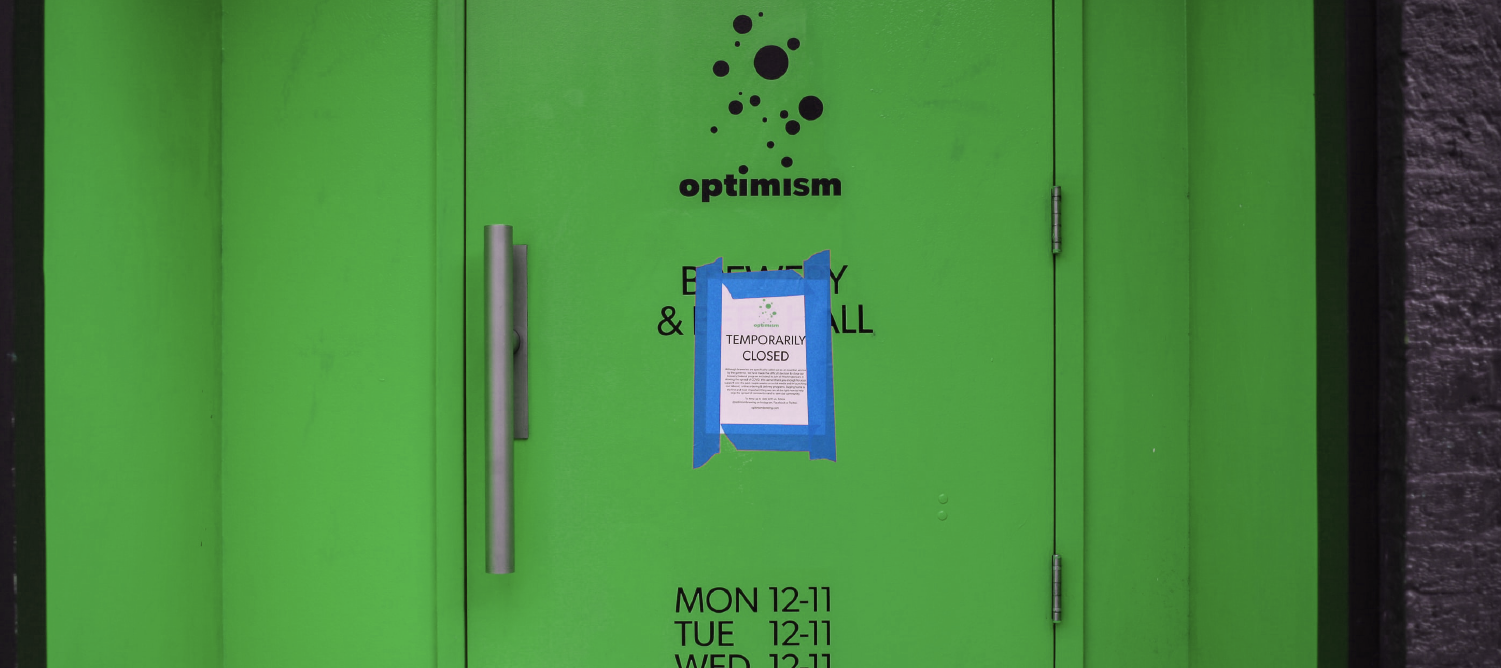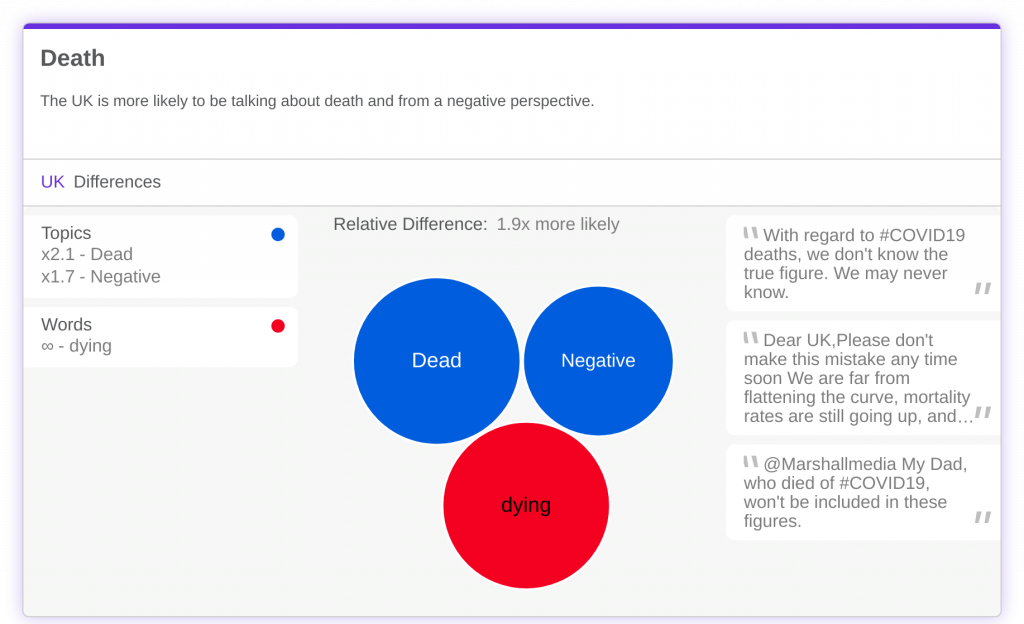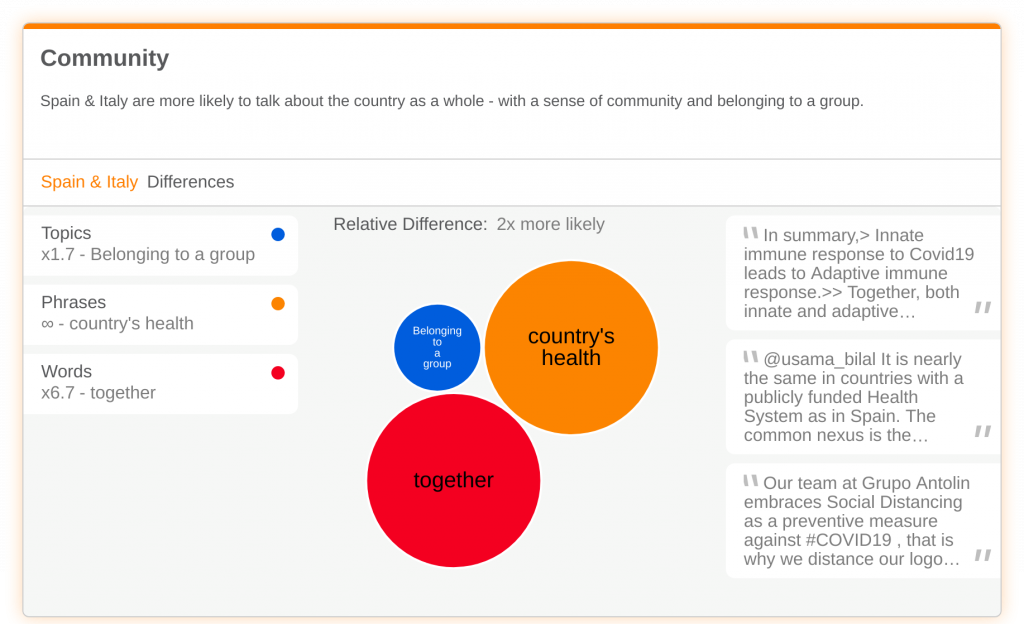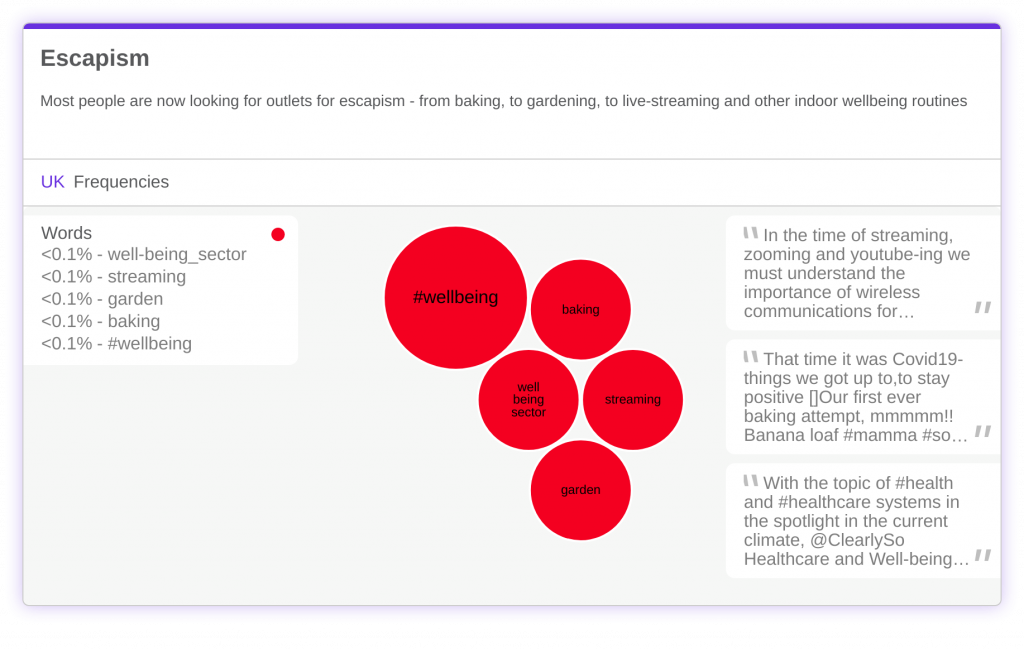What can we learn about countries at different stages of COVID-19?

By Eilidh MacDonald and Roxana Tintea
There is absolutely no denying that these are scary and completely unrecognisable times for all of us. There is no rulebook that we can refer back to to understand how consumers are currently feeling, and to ensure that as brands we are communicating with them in an appropriate and empathetic way.
To try and help provide some guidance, we teamed up with Methods+Mastery to combine their industry knowledge and real-life application, with the language comparison insights from our platform, and what we were ultimately looking to find out was this ‘Are there significant and noticeable differences in the way consumers feel in different countries, and those that are at different stages of the virus life-cycle?’
For this, we looked at Twitter conversations around COVID-19 from audiences in Spain and Italy, and compared this from people in the UK.
Death
One immediate thing that struck us is how people in the UK are far more likely to be talking about death than any of the people in Spain and Italy – and as well as this, there is a clear trend that consumers in the UK are more likely to distrust their government.

Corruption
There are a lot of individuals calling out what they believe to be misinformation in the media and referring to politicians as liars, but on the other hand, audiences in Spain and Italy (who are further through the virus life-cycle than those in the UK) are more likely to be using language that represents the country as a whole united front ,with an overarching sense of community and togetherness.

Community
We’ve all observed shifts in people’s habits and behaviours as lockdown rules are tightened and the virus has spread, and emotions, whatever they may be, have run high during these trying times.
While most people have moved away from the initial wave of denial, some have entered an extended period of fear and anxiety – like we see in the UK – while others have come together and embraced feelings of gratitude and hope, like we see in Italy and Spain.

Escapism
Whatever the dominant emotion, most people are now looking for outlets for escapism – from baking, to gardening, to live-streaming and other indoor wellbeing routines. But as we move closer to an exit plan, and we start re-thinking life moving forward, emotional responses will shift again: to more anxiety, panic and nostalgia, but also resilience, determination and regeneration. And cultures, political and societal systems, as well as the stage of the pandemic that a country is in, will guarantee the journey to the normal is different in for every community.

So what can we learn from this?
This is a crucial moment for brands. While many have been given leeway by consumers during the ‘keeping the lights on’ stage of the pandemic, they’re now expected to go through a period of strategic revelation and deliver against different standards. Getting it right can set up brands for success for years to come, but getting it wrong means becoming disconnected and eventually obsolete.
In our opinion, there are three key things that we can learn from this project:
-
- The status quo is fragile
Brands must be cognisant of the delicate balance between feelings of sadness, grief and joy. As emotions vary noticeably, and can tip at any moment, you cannot use the same messaging and tone for all your audiences. Something that could be suitable for one market or community might be offensive or completely inappropriate for another. - Tap into your local expertise
Consumers in one market believe brands need to prioritise rapidly developing new, helpful products. In a neighboring market, consumers expect brands to make every effort to communicate regularly and transparently about how they’re responding to the crisis. These differences, as well as the varying stages of emotions encountered, have significant implications for global brands. Your in-market teams should play a crucial role in determining what will strike the right chord. - Leverage data to amplify your comms strategy
Data shows that countries who are further through the stages of this virus are starting to feel more positive – so there is light at the end of the tunnel. Continue to tap into consumer data using the power of comparison unique to Relative Insight to surface the most relevant insights, at the right milestones and this information can help brands anticipate what sort of messaging could be more appropriate for markets such as the UK over the next few weeks.
- The status quo is fragile
